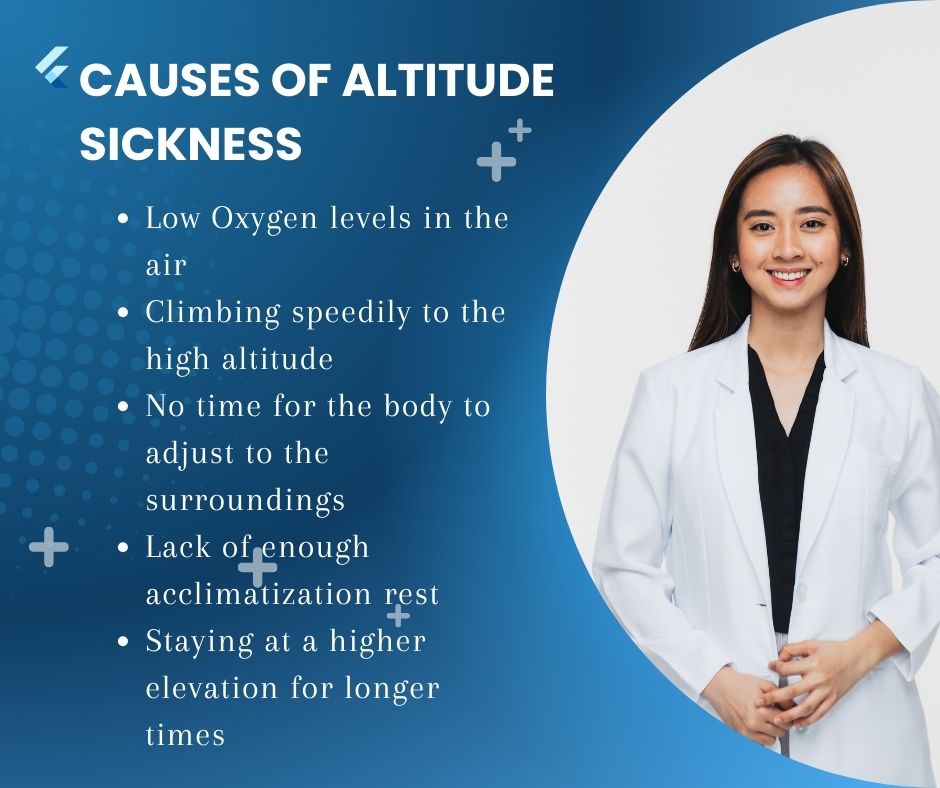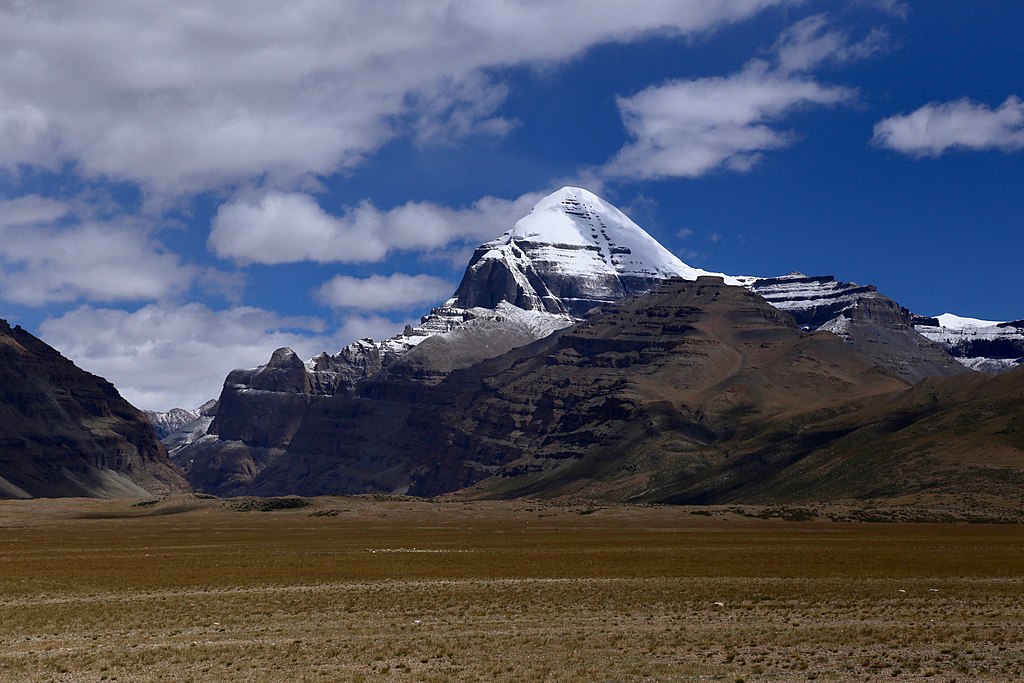Altitude Sickness Guidelines for Tibet Travel
24 May 2024 Umesh Paneru

Tibet, the autonomous region of China is best known as the ‘Roof of the World’. Lhasa, the capital of Tibet is at an elevation of 3,656 m (11,990 ft.) and is one of the highest cities in the world. The religious and administrative capital of Tibet is an abode for numerous Tibetan Buddhists. Since the average elevation of Lhasa is above 3000 m, altitude sickness is the most common issue. Travelers must be well-prepared before traveling to Tibet and must know altitude sickness causes and its prevention. Here, we present the article ‘Altitude Sickness Guidelines for Tibet Travel’ to provide useful insights.
What is Altitude Sickness?
A medical condition that occurs normally in high altitudes or mountains above an elevation of 2500 m is called altitude sickness. In layman’s words, altitude sickness is a condition experienced when the air pressure is high and the oxygen level is low. Altitude sickness is also known as mountain sickness or altitude illness.
The high altitudes are classified as follows:
- High Altitude – (between 1500m-3500m/ 4921.26 ft.-11,482.94 ft.)
- Very High Altitude – (between 3500m-5500m/ 11,482.94 ft. – 18,044.62 ft.)
- Extreme Altitude – (above 5500m/ 18,044.62 ft.)
Types of Altitude Sickness
There are mainly three types of altitude sickness which are as follows:
1. Acute Mountain Sickness (AMS):
Acute Mountain Sickness (AMS) is a very common form of altitude sickness which is mild in nature.
- Primary symptoms of AMS: Headache, hangover, nausea, breathlessness, vomiting, vertigo, fatigue, and loss of appetite and sleep.
- Extreme symptoms of AMS: Constant headache, laziness, irregular breathing, repeated vomiting, irregular urination, slight swelling (hands, face, feet), and heaviness in the legs
2. High-Altitude Pulmonary Edema (HAPE):
HAPE is a complicated condition of altitude sickness where fluid buildups in the lungs which requires immediate treatment to prevent the high risk of death.
- Primary symptoms of HAPE: Bluish/Pale skin, continuous cough (with pinkish saliva), fever, gasping (even at rest), chest tightening, weakness, confusion
3. High-Altitude Cerebral Edema (HACE):
HAPE is a complicated condition of altitude sickness where fluid buildups in the brain which requires immediate medication to prevent death. When a person spends more than a week at a high elevation, there is a chance of getting it.
- Primary symptoms of HACE: Hallucinations, unconsciousness, numbness, clumsiness, pinkish frothy cough, unsteadiness, repeated vomiting, constant headache (painkillers resistant)
Causes of Altitude Sickness
- Low Oxygen levels in the air
- Climbing speedily to the high altitude
- No time for the body to adjust to the surroundings
- Lack of enough acclimatization rest
- Staying at a higher elevation for longer times

Altitude Sickness Types and Symptoms Tabulation
| Altitude Sickness Types | Altitude Sickness Symptoms |
| AMS (Acute Mountain Sickness) | Primary Symptoms: Headache Hangover Nausea Breathlessness Vomiting Vertigo Fatigue Loss of appetite and sleep Extreme Symptoms: Constant headache, Laziness, Irregular breathing, Repeated vomiting, Irregular urination, Slight swelling (hands, face, feet), and heaviness in the legs |
| HAPE (High-Altitude Pulmonary Edema) | Bluish/Pale skin Continuous cough (with pinkish saliva), Fever Gasping (even at rest) Chest tightening Weakness Confusion |
| HACE (High-Altitude Cerebral Edema) | Hallucinations Unconsciousness Numbness Clumsiness Pinkish frothy cough Unsteadiness Repeated vomiting Constant headache (painkillers resistant) |
Who is Likely to Get Altitude Sickness?
- Anyone can get altitude sickness at a high altitude no matter how fit they are and which they are.
- For those who have previously suffered altitude sickness, there is a high chance of them getting it.
- Those who don’t take proper acclimatization rest.
- Those who ascend speedily at high altitudes.
- More likely to get by those with a medical condition people having blood pressure, asthma, and heart-related issues.
- Other factors include eating, drinking, and sleeping habits.
Preventions for Altitude Sickness
- Take rest for at least 48 hours before traveling to high altitude
- Ascend slowly maintaining the speed
- Don’t walk/hike more than 500 m a day
- Give your body time to adapt to higher altitude
- Utilize acclimatization rest days properly
- Try to spend a night at a lower altitude than the highest climb of that day
- Don’t do heavy exercises
- Eat a balanced diet food includes carbs
- Keep drinking frequently and stay hydrated
- Avoid drinking alcohol, smoking, and salty junk foods
- Know your body limit and notice the body signals
- Inform the guide if any issue arises
- Good sleep and complete rest is essential
- Take medicine consulting a guide
Altitude Sickness Guidelines for Tibet Travel
As mentioned earlier, the average elevation in Tibet is above 3000 m which means there is a high chance of getting altitude sickness during Tibet Travel. Firstly, the itinerary is prepared including proper acclimatization rest days for travelers to adapt to such altitude. Throughout the tour, the vehicles are equipped with oxygen cylinders in case of emergencies or difficulty for travelers.
Preparations for Tibet Travel
Before the tour
- Begin preparation in advance (at least for a month)
- Build Stamina and endurance (Start walking, including stair walks)
- Try to walk or hike at high elevation
- Walk on different terrains and in different weather
- Make sure to maintain the pace/speed
- Eat nutritious and balanced diet food
- Avoid smoking and drinking alcohol
- Get good rest and sleep
- Drink plenty of water
- Wear Comfortable Shoes
- Do check-ups and consult a doctor if necessary
During the tour
- Strictly follow the itinerary schedule
- Be physically and mentally prepared
- Stay at a lower elevation for the first two days
- Take proper acclimatization rest days
- Eat a balanced diet including carbs
- Keep drinking water to stay hydrated
- Walk slowly maintaining your pace/speed
- Wear warm and comfortable clothes
- Wear comfortable shoes
- Try to get a comfortable sleep
- Don’t do heavy exercises or carry physical activity
- Urinate frequently throughout the day and night
- Avoid drinking alcohol and smoking
- If any difficulty consult with a guide
15 Ways to Prevent Altitude Sickness in Tibet Travel
- Physically and Mentally Prepared: Travelers must be both physically and mentally prepared for Tibet Travel and well-informed and well-prepared.
- Proper Rest before Travel: The average elevation in Tibet is above 3000 m, so take proper rest before Tibet Travel. Don’t take much stress and allow your body to adapt to the surroundings.
- Don’t catch a Cold before Travel: Make sure you don’t catch a cold before traveling to Tibet. Catching a cold lowers the body’s immune system which creates difficulty at higher elevations in Tibet.
- Travel slowly : Travel slowly, don’t rush to get to Lhasa quickly. Make sure to stay at a lower elevation for at least 2 days to adjust to the surroundings.
- Take proper acclimatization rest: After arriving at Lhasa, take a proper acclimatization rest. Allow your body to adapt to the altitude to prevent altitude sickness.
- Walk slowly maintaining a pace : At such high altitudes, travelers might face difficulty while traveling due to the atmosphere. So, we recommend walking slowly maintaining a pace.
- Get Plenty of Rest and Sleep: Make sure to get plenty of rest and sleep so that your body functions well and travels smoothly. Avoid doing heavy physical exercises.
- Eat a balanced diet of nutritious meal : A good balanced diet of nutritious meals is essential during Tibet travel to provide supplements to the body. Eat nutritious meals including carbs and avoid smoking, drinking alcohol, sleeping pills, calming drugs, and salty junk foods.
- Keep yourself hydrated : Drinking plenty of water and keeping yourself hydrated also helps prevent altitude sickness. Travelers can also drink energy drinks. Also, urinate frequently throughout the day and night.
- Balance between ascend and descend: Try to keep a balance between ascending elevation and descending. Make sure to ascend only up to 500 m a day and for sleep descend at a lower elevation to prevent altitude sickness.
- Use proper Altitude Sickness Medicines: Don’t forget to pack necessary altitude sickness medicines, prescribed medicines, water purifying kits, and other cold and cough medicines. When finding difficulty, use proper altitude sickness medicines. Consult a guide or immediately descend at a lower elevation.
- Know your body signs: It is very essential to know your body’s signs at such a high elevation. Keep track of your body signs to take necessary actions in case of altitude sickness.
- Wear Warm Clothes and Comfortable Shoes: It is very colder due to the high elevation and fluctuating temperature. Thus, wear warm light clothes and comfortable shoes during a Tibet Travel. We provide a comprehensive packing list, so pack accordingly.
- Stay for a limited time: Staying longer at a higher elevation can cause altitude sickness, especially at the mountain passes or near EBC and Rongbuk Monastery. So, stay there only for a limited time and descend quickly.
- Stick to Itinerary Schedule: Our itinerary is well-designed with proper acclimatization rest days to prevent altitude sickness. Strictly stick to the itinerary schedule and if there is any difficulty flexibility options for customization are always there. We can slow down but can’t hurry to complete a tour. Our client’s health and safety are our top priority.

Altitude Sickness Symptoms with Suggested Medicines
| Altitude Sickness Issues | Suggested Medicines |
| Headache | Paracetamol |
| Nausea | Metoclopramide, Prochlorperazine |
| Mild AMS | Acetazolamide |
| HACE | Acetazolamide, Dexamethasone – Corticosteroid, Oxygen Gas |
| HAPE | Nifedipine, Acetazolamide, Oxygen Gas |
| Diarrhea | Loperamide, Azithromycin, Ciprofloxacin |
| Infections | Metronidazole, Amoxycillin |
| Cough | Pholcodine |
| Sore Throat | Lozenges with anesthetic |
| Blocked nose | Xylometazoline, Pseudoephedrine |
| Cold sores | Acyclovir |
Note: The above-mentioned suggested medicines are basic used medicines by most travelers. Travelers can consult a doctor for medicines that suits them.







